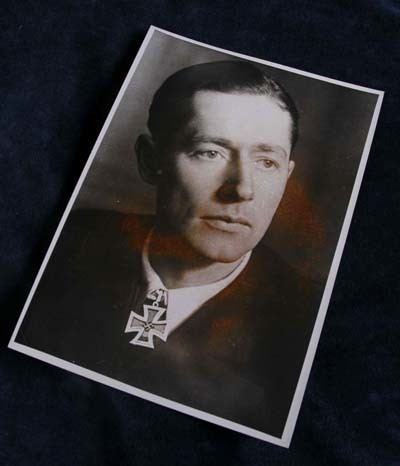Name U-522 Yard number 337 Commissioned 11 June 1942 Launched 1 April 1942 Draft 4.7 m Builder Deutsche Werft | Ordered 14 February 1940 Laid down 9 July 1941 Construction started 9 July 1941 Length 77 m Beam 6.76 m | |
 | ||
Part of 4th U-boat Flotilla, 2nd U-boat Flotilla | ||
German submarine U-522 was a Type IXC U-boat of Nazi Germany's Kriegsmarine during World War II.
Contents
She was laid down at the Deutsche Werft (yard) in Hamburg as yard number 337 on 9 July 1941, launched on 1 April 1942 and commissioned on 11 June with Kapitänleutnant Herbert Schneider in command.
U-522 began her service career with training as part of the 4th U-boat Flotilla from 11 June 1942. She was reassigned to the 2nd flotilla for operations on 1 October 1942.
She carried out two patrols and sank seven ships. She damaged two more. She was sunk in February 1943 in mid-Atlantic west of Madeira by a British warship.
Design
German Type IXC submarines were slightly larger than the original Type IXBs. U-522 had a displacement of 1,120 tonnes (1,100 long tons) when at the surface and 1,232 tonnes (1,213 long tons) while submerged. The U-boat had a total length of 76.76 m (251 ft 10 in), a pressure hull length of 58.75 m (192 ft 9 in), a beam of 6.76 m (22 ft 2 in), a height of 9.60 m (31 ft 6 in), and a draught of 4.70 m (15 ft 5 in). The submarine was powered by two MAN M 9 V 40/46 supercharged four-stroke, nine-cylinder diesel engines producing a total of 4,400 metric horsepower (3,240 kW; 4,340 shp) for use while surfaced, two Siemens-Schuckert 2 GU 345/34 double-acting electric motors producing a total of 1,000 shaft horsepower (1,010 PS; 750 kW) for use while submerged. She had two shafts and two 1.92 m (6 ft) propellers. The boat was capable of operating at depths of up to 230 metres (750 ft).
The submarine had a maximum surface speed of 18.3 knots (33.9 km/h; 21.1 mph) and a maximum submerged speed of 7.3 knots (13.5 km/h; 8.4 mph). When submerged, the boat could operate for 63 nautical miles (117 km; 72 mi) at 4 knots (7.4 km/h; 4.6 mph); when surfaced, she could travel 13,450 nautical miles (24,910 km; 15,480 mi) at 10 knots (19 km/h; 12 mph). U-522 was fitted with six 53.3 cm (21 in) torpedo tubes (four fitted at the bow and two at the stern), 22 torpedoes, one 10.5 cm (4.13 in) SK C/32 naval gun, 180 rounds, and a 3.7 cm (1.5 in) as well as a 2 cm (0.79 in) anti-aircraft gun. The boat had a complement of forty-eight.
1st patrol
The boat departed Kiel on 8 October 1942, moved through the North Sea, negotiated the gap between Iceland and the Faroe Islands and entered the Atlantic Ocean.
She opened her account when she damaged the Hartington about 450 nautical miles (830 km; 520 mi) east of Belle Isle (off the main island of Newfoundland) on 2 November 1942. The abandoned Hartington was sunk later that same day by U-521.
U-522 sank the Martima 500 nautical miles (930 km; 580 mi) northeast of St. Johns on the same day as the attack on the Hartington and went on to sink the Parthenonn.
She entered Lorient, on the French Atlantic coast, on 2 December 1942.
2nd patrol and loss
U-522's second foray took her to the mid-Atlantic once again. She sank the Norvik 500 nautical miles (930 km; 580 mi) west of Teneriffe on 9 January 1943. Two days later, she damaged the British Dominion "northeast of the Canary Islands".
She was sunk west of Madeira on 23 February 1943 by depth charges dropped by the sloop (ex-US Coast Guard Cutter) HMS Totland.
Fifty-one men died; there were no survivors.
Wolfpacks
U-522 took part in a wolfpack, namely,
